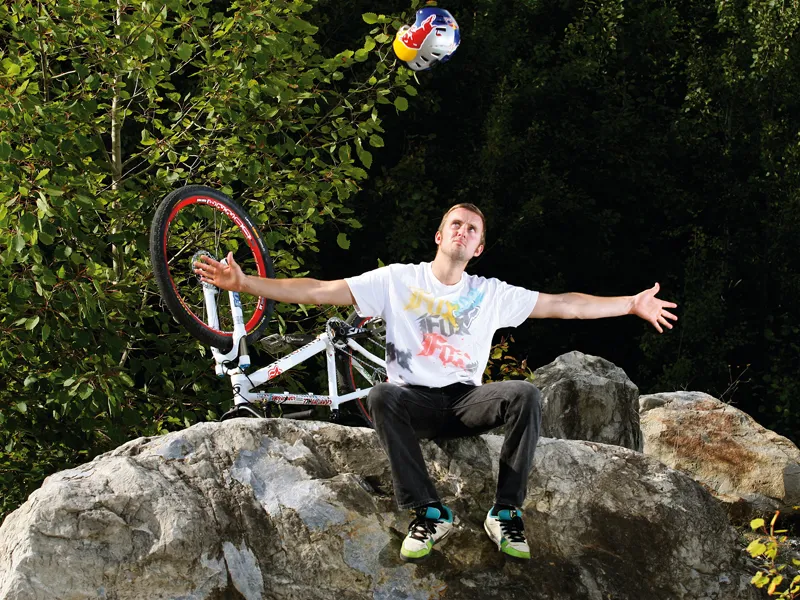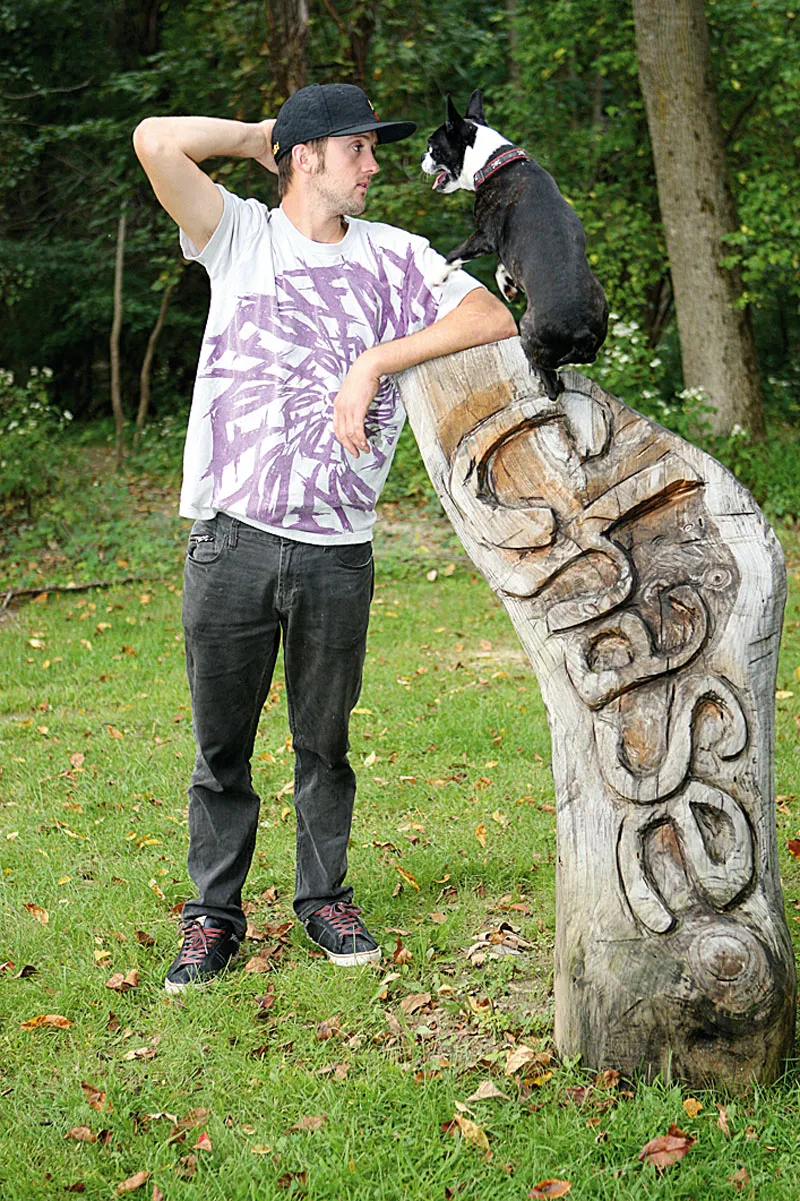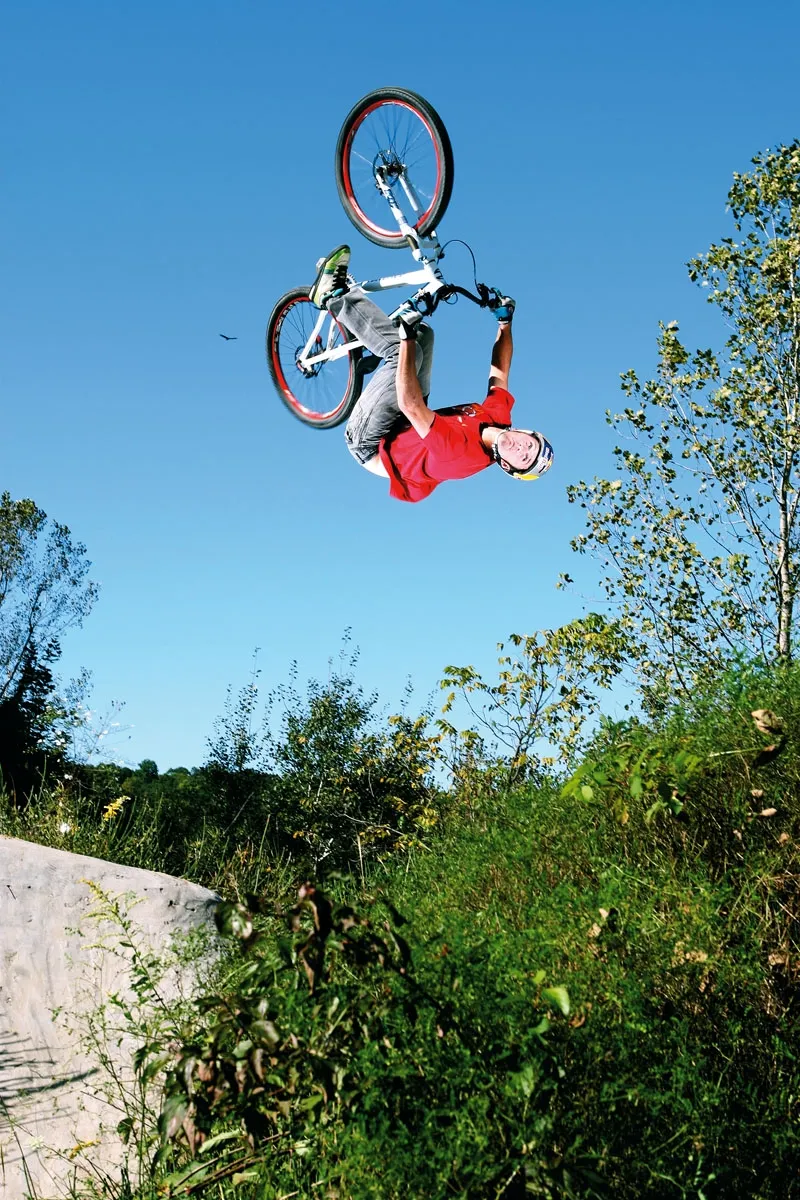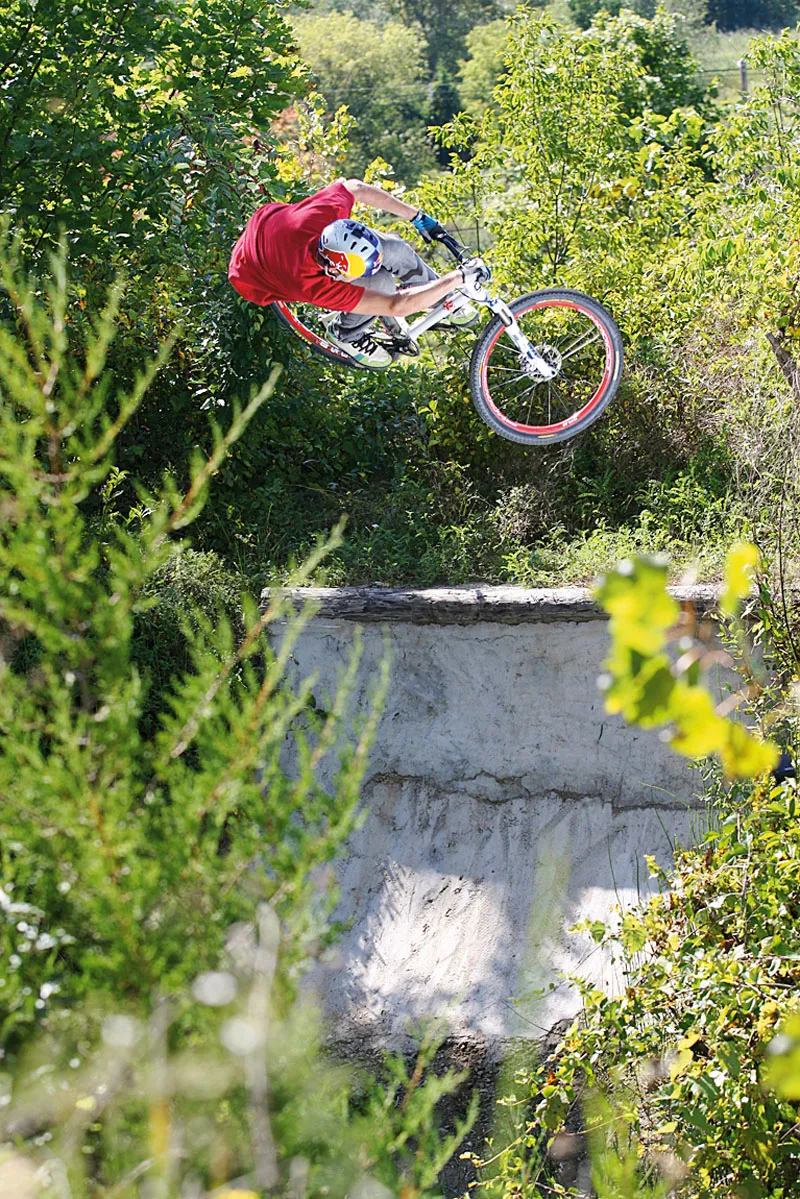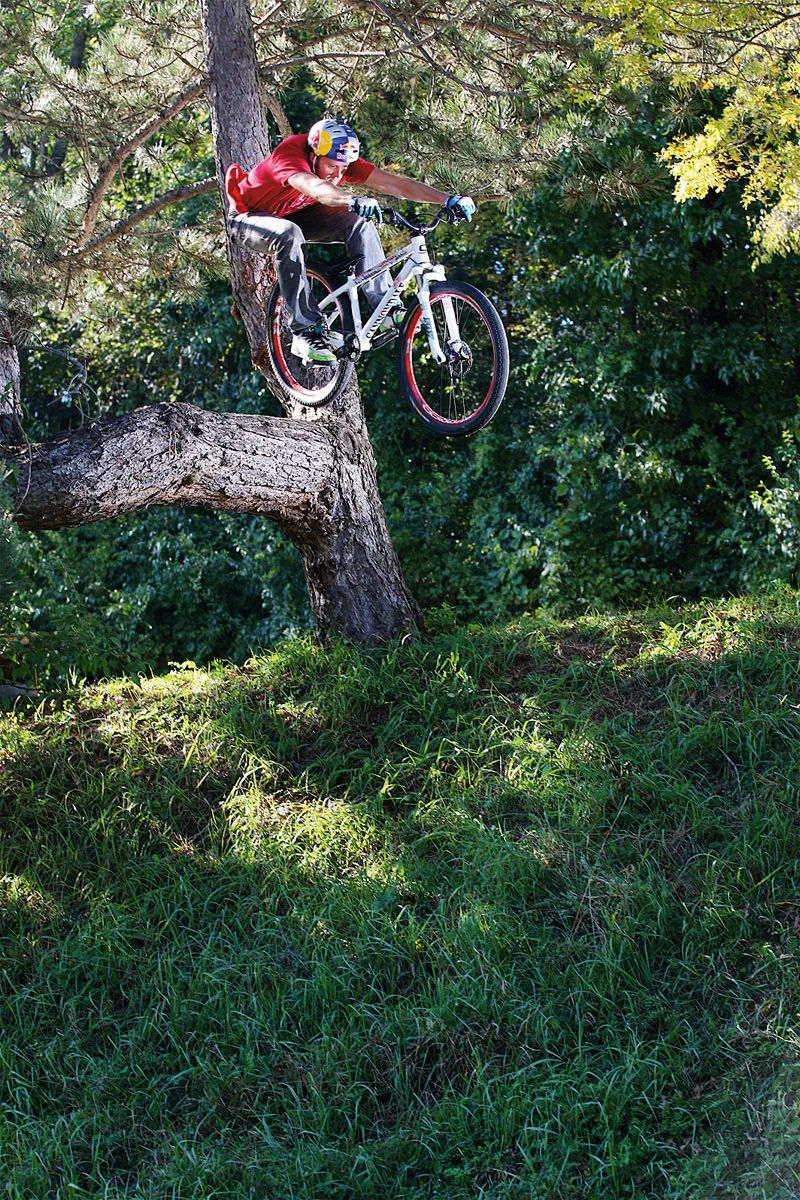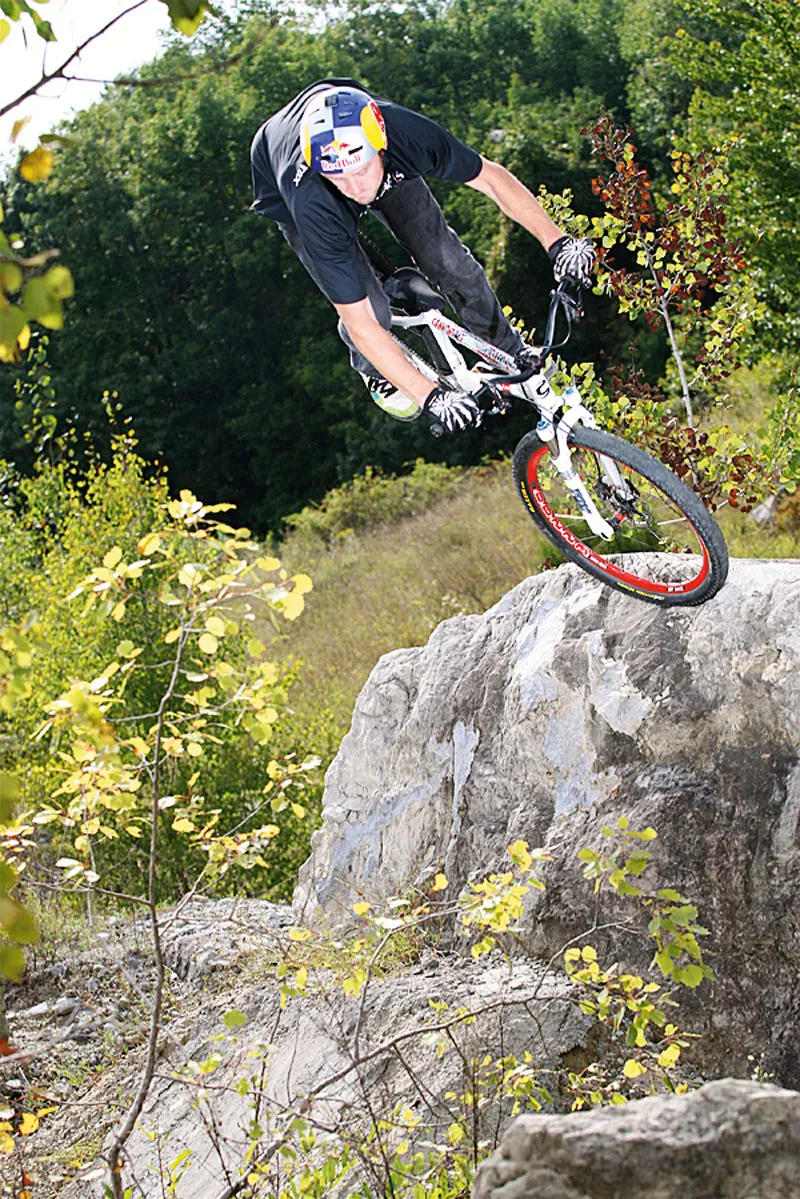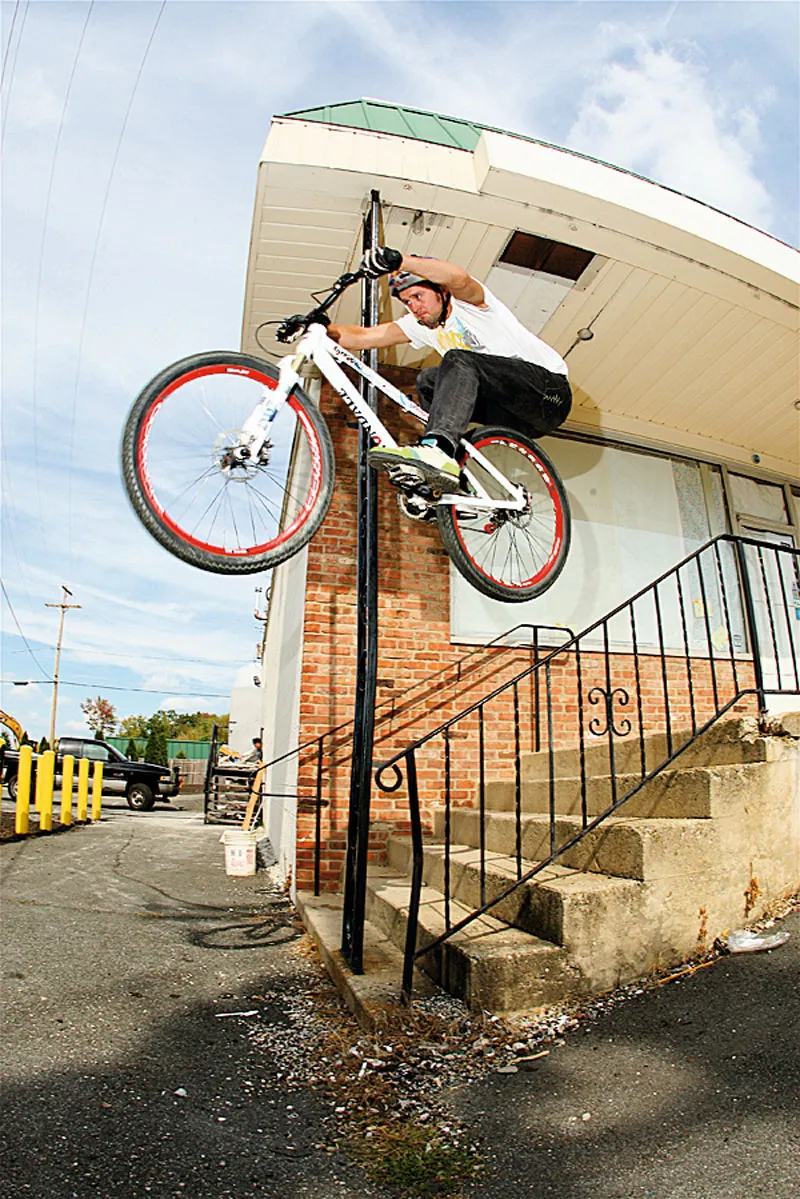Aaron Chase has done a hell of a lot to advance the sport of freeride mountain biking in its short history. Over the past decade, his ground-breaking work on the bike, bringing technical BMX tricks to big wheels, has been matched off it by his creative enthusiasm for innovative bike design and film-making.
When the sport was young, competitions were few and far between. But whenever a contest went down, the one thing you could be sure of was that Chase, also known as AC, would be on the podium.
Back then, Chase was freeride’s golden boy. When he wasn’t slaying comps, he was filming fior New World Disorder or with Don Hampton for a nugget of bike video gold you’d watch over and over again. And with his status as a top rider, he was able to influence bike companies to produce freeride-specific parts and frames.
Chase suffered his first setback in the winter of 2006, breaking his leg in a snowboarding injury, but despite this, he was back in full form for the 2007 Nissan Qashqai Urban Challenge Series. Then misfortune struck again, when Chase had an accident during practice for the series’ first event in Newcastle upon Tyne that changed his life forever.
His rear tyre slipped while he was riding on a suspended ladder bridge, he fell around 10ft and landed directly on his tailbone, shattering his L1 vertebra. He also tore his left hamstring and sustained nerve damage that affected one of the major muscles in his left calf.
To remedy the injuries, Chase underwent a series of operations that took bone grafts from his hip and placed them around the other bone chips of his shattered vertebra. These chips were then fused to the two adjacent vertebrae using an H-shaped metal cast.
Here, we sit down with the 31-year-old from Vernon, New Jersey to talk about his amazing career and discover what he’s learned about himself on the road to recovery.
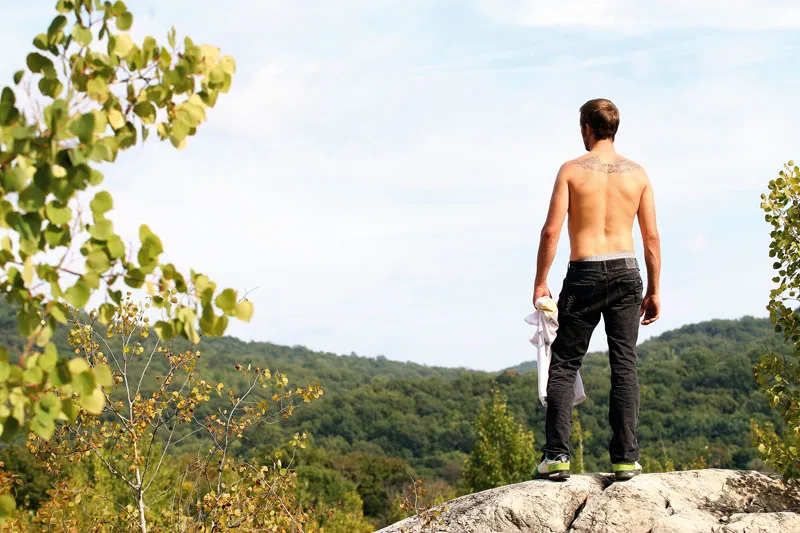
BikeRadar: What drew you to doing tricks on your mountain bike?
Aaron Chase: I’ve always raced cross-country and later downhill, but I wanted to do something that was less strenuous and more fun on my bike. I started riding trials in high school, which led to dirt jumping and then to street.
You were riding dirt jumps and street a long time before companies were making those kinds of bikes. What did you ride?
Back then, you simply couldn’t find a frame with a low top tube or short chainstays, so the key was to find the smallest frame you could. Women’s bikes were good as well, because they were small.
As far as parts go, I would get everything out of the used bin at the bike shop. The parts were all going to break anyway, especially the derailleurs and cranks.
How did you start getting custom parts built for you?
I was racing for the SoBe Headshok team with Brian Lopes. The bike that Lopes had designed was great, but not perfect for what I was doing. The next year, Cedric Gracia joined the team and they made a bike with brand new geometry for him.
I noticed a difference in how the bikes handled and it opened my eyes to designing my own frame. Cannondale build all of their frames in-house, so I can make my changes on paper and then have the new bike in my hands within a week.
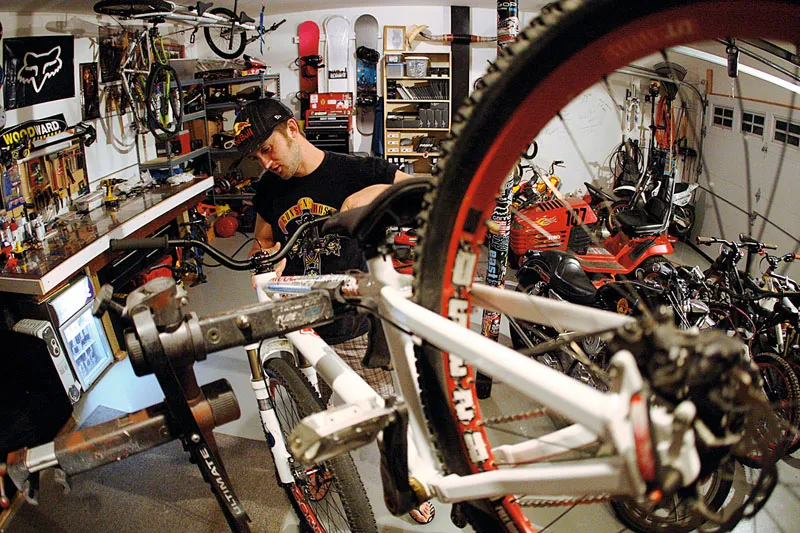
AC gets to grips with his latest signature Cannondale hardtail at his bike workshop
What’s your process for creating a new frame or product?
It’s a lot of trial and error. Sometimes it works great and sometimes it doesn’t, but the important part is noticing the difference. Working with companies like SIC, Cannondale and Lizard Skins is great because they can get prototypes to me quickly. When I have the product in my hands, I can tell them what changes have to be made and also how durable they need to make it.
Once you’d worked on the new hardware, what was the next goal in your career?
I wanted to make my own mountain bike film. I’d been filming with Don Hampton for a series called Chain Reaction. I really enjoy the creative aspect of filming and editing all the footage I get along the way.
Don gave me the opportunity to make my very own movie, so I did some filming and mashed that footage together along with the stuff that I’d already been collecting. My first movie, Killing Time, was something that I thought just my friends would watch, but it ended up being a hit. At the Tokyo premier, I realised that I probably should have cut the scene with me wearing nothing but my underwear stuffed with tube socks!
Have you filmed with anyone besides Don Hampton?
I’m lucky enough to have shot with Freeride Entertainment on their New World Disorder project. I got my start in NWD 4 and was in every one up to the last film in the series, NWD 10 – Dust and Bones.
What was that like?
The riding level is so high in the New World films that it really pushes you to ride over your head. All year long, I’d be practising my next hard trick for NWD. Among others, I pioneered the handplant over tree branch, backflip 180 and backflip to fakie for my segments in New World.
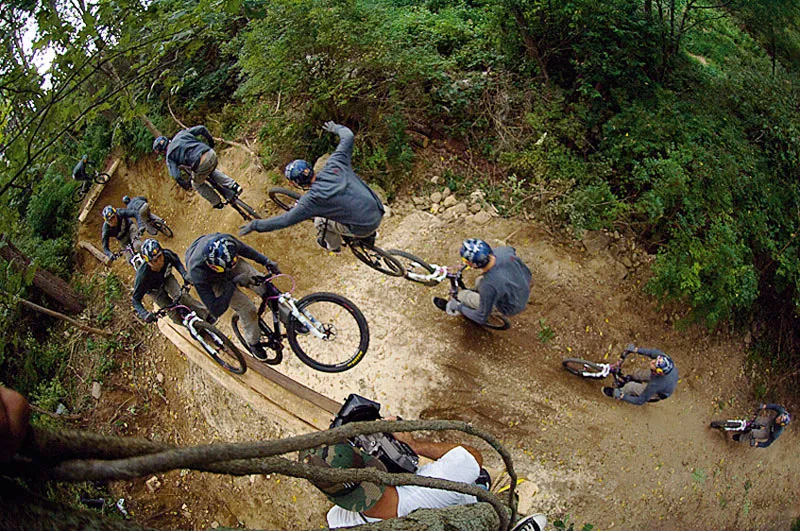
AC has been filmed by the biggest bike movie makers, as well as making his own films
After Killing Time, you did more two feature films – Counterparts and Bang Bang. What were those experiences like for you?
Counterparts was really fun because it was more of a ‘stick or slam’ action based film. Bang Bang was harder because it was a documentary on breaking my back and following my road to recovery.
What’s been the hardest part of the recovery process?
When the injury happened, it took me back 10 steps in life. I had to figure out what the new plan was and the future looked so dark. The hardest part was not knowing if I would ever ride again. I had so much nerve damage in my left leg that I thought I’d need some kind of a device to assist my riding. I just didn’t know if I would ever be flipping or spinning again with my leg.
What did your doctors say about your injury and recovery?
They said that if I was a football player, I wouldn’t be going back on the field. With three rods in my back, I can never take a fall like that again – I risk never walking again, or worse.
How did you deal with that prognosis?
I try to be positive and have the mindset that I’m my own judge and person. I was off the bike completely for six months and worked on getting my strength back very slowly. I’ve now gotten much stronger and am riding hard again. You gotta break a few bones to make an omelette!
Are there any particular mental hurdles you have to deal with when you ride now?
Definitely. I used to just try a new trick and, most likely, land it. Now I’m working to get back the tricks that I used to know and I hear this voice in my head saying, ‘Be careful – you could crash like that again’.
What have you learned from this whole experience?
The first thing I learned is that I’m definitely not invincible. I’ve also come to understand that when you’re given a rocky road like this, you simply have to make the best of it. The companies that I ride for were always there for me through thick and thin. I still ride for the same companies that I rode for before I got hurt – that says something. Thanks again to everyone who has supported me through all of this.
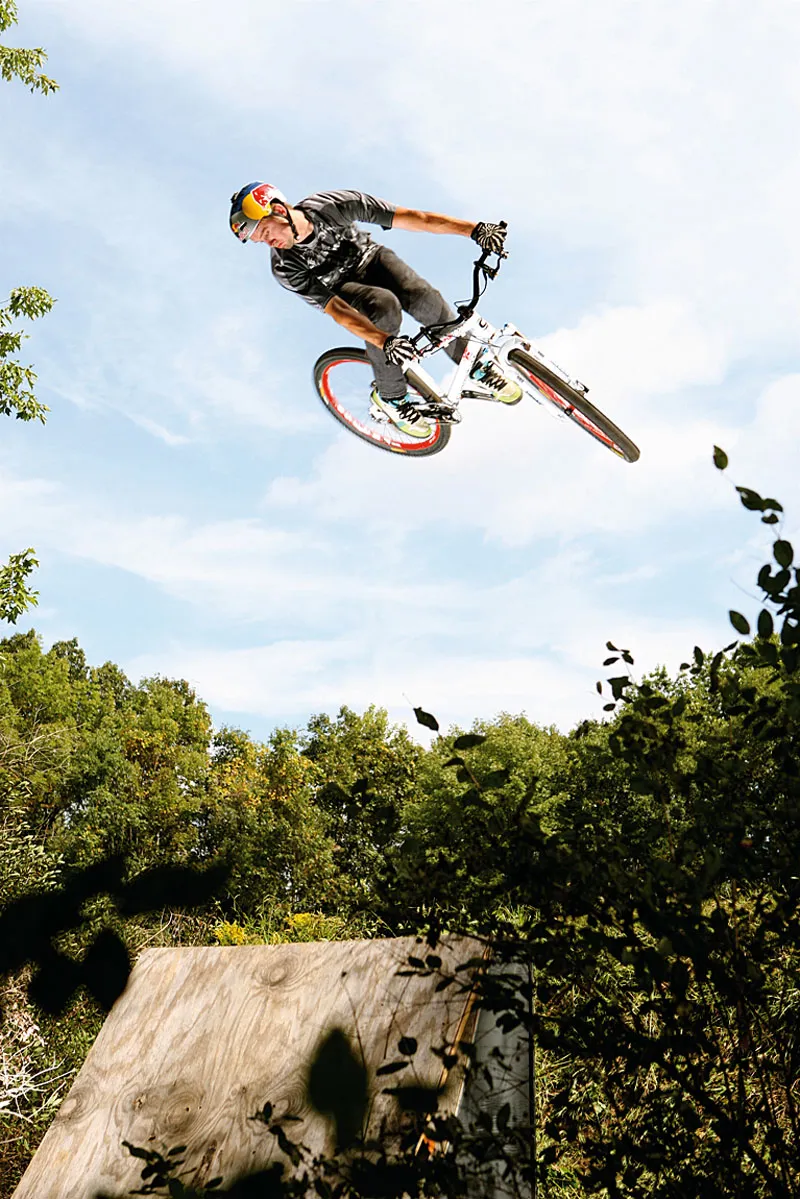
Chase pioneered tricks like the backflip 180 and backflip to fakie on mountain bikes
